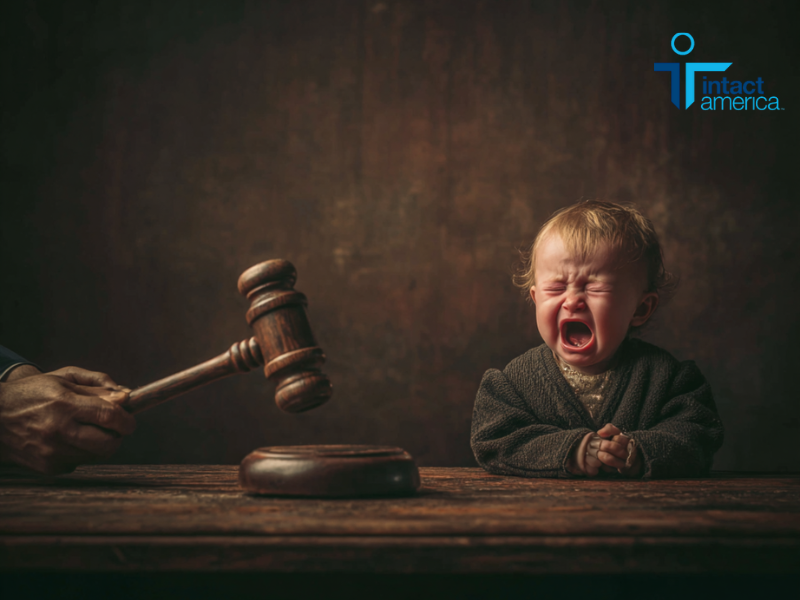
Significant scars, bumps, and lumps as a result of circumcision are often not even mentioned as potential side effects. However, these deformities can cause both physical and psychological distress.
By providing a comprehensive understanding of this overlooked aspect of circumcision, we aim to help readers make more informed decisions about the procedure. These choices have lasting effects and should be made with a complete awareness of the immediate procedure aftermath and the possibility of long-term complications, such as scars, bumps, and lumps.
Circumcision Scars: A Permanent Reminder
After a circumcision, a scar usually forms where the foreskin is removed, resulting in a noticeable line or change in color on the penis shaft. The look of the circumcision scar can differ from person to person, ranging from a faint line to a more prominent, thicker scar. Hypertrophic or keloid scarring may arise, which can cause unsightly raised or irregular scarring. Skin bridges may also emerge in more severe instances.
Circumcision scars can have multiple physical effects. They can decrease sensitivity or cause uncomfortable sensations like itching and pain, which may interfere with sexual activities and cause distress. Additionally, pronounced or irregular scars could lead to difficulties during erections or sexual intercourse.
Circumcision scars can also have psychological effects in addition to physical ones. They can serve as a constant reminder of the procedure and result in feelings of loss, anger, or dissatisfaction with the penis’s appearance. These feelings can lead to problems with self-esteem, body image, and intimate relationships. It’s crucial to acknowledge and address these possible effects to provide complete care and support for people affected by circumcision scars.
Remaining Intact is the Best Way to Avoid Scars
An article on circumcision scarring on healthline.com lists the various devices used for circumcision on an infant, ranging from the gomco clamp, over which the foreskin is pulled and clamped to cut off blood flow to the skin. In contrast, a doctor uses a scalpel to remove the foreskin from a mogen clamp into which the foreskin is inserted and then removes it with a scalpel from a plastibell device inserted between the foreskin and over the glans for removal by the scalpel of the foreskin (the plastic ring remains to help the skin reattach to the shaft). Stitching may be required if excess bleeding occurs.
If reading this makes you squirm and feel uncomfortable, why would you subject an infant to it?
Scarring is an inevitable and “normal” result of infant circumcision. Recommendations are made for minimizing scarring, like applying petroleum jelly to prevent friction between the penis and diaper and washing the penis wound with soap and water. Adults are warned not to scratch as their circumcision heals and feels itchy. Infants will feel the discomfort of itching, but no attention will be paid since they can’t yet communicate other than crying.
There is no medical benefit or reason for causing this discomfort to an infant or creating a lifelong scar carried into adulthood.
Bumps and Lumps: Unexpected After-effects of Circumcision
The formation of bumps and lumps after circumcision is another after-effect of circumcision not commonly mentioned that can have a significant impact. These formations are a result of the body’s healing process, in which abnormal skin or tissue growth might occur due to the trauma caused by circumcision.
A skin bridge can occur when a wound sticks to the glans, resulting in a bridge of skin between two typically separate areas. Pain can be a long-term effect of skin bridges, especially during sexual activity or erections. Granuloma is a type of formation that occurs when the body produces excess tissue during healing. It can show up as small, firm bumps on the site of the circumcision. Although they are generally not painful, they can cause cosmetic concerns due to their visible appearance. Another type of lump that may develop is an inclusion cyst, which happens when skin cells are trapped under the skin during the healing process. They are typically small and painless. Bumps and lumps may require surgical correction, medical treatments, or psychological support.
Real-Life Experiences: Men Living with Circumcision Scars, Bumps, and Lumps
The personal stories of men who have lived with the physical after-effects of circumcision provide a moving and human outlook compared to the clinical facts and figures. These stories highlight not only the physical challenges of having scars, bumps, and lumps but also the profound impact on self-confidence, how one views one’s body, and sexual encounters.
Consider this story relayed by Intact America Board Member Marilyn Milos, “A Coming Out Story.”
Bathhouses in San Francisco were in full swing, and gay men had an opportunity to see lots of penises and the scars of circumcision on most penises. The men were shocked by the damage they saw. They told me about the extensive scarring, skin bridges, curvatures, and missing hunks and slices. Many recognized their scars and shared their reactions to the realization of what a doctor or mohel had done to them. This openness is something most straight men have never experienced; instead of witnessing the harm, they often tout the benefits of circumcision and choose to pass the scars on to their sons. As gay men began to educate themselves and others, that began to change. I asked Paul Tardiff, a gay man who had been circumcised as an adult if he’d be willing to talk about the differences he felt for a mini-documentary we were making to air during Dr. Dean Edell’s medical segment on the televised evening news. Paul agreed, and on the show, he said the difference between being intact and then circumcised is like first seeing in color and then only seeing in black and white.
Surgical Revision of Circumcision Scars, Bumps, and Lumps
Corrective surgery for scars may involve separating the dartos fascia around the penis from the underlying skin, releasing tension in the affected area, and allowing for more movement to reduce inflammation and flatten out raised tissue. Excess skin or fat tissues may be removed and stitched onto other irregularities to smoothen the skin contour. Of course, there is always the possibility of infection. The best thing is not to circumcise baby boys, which would completely prevent the need for surgical revision to begin with.






No Comments